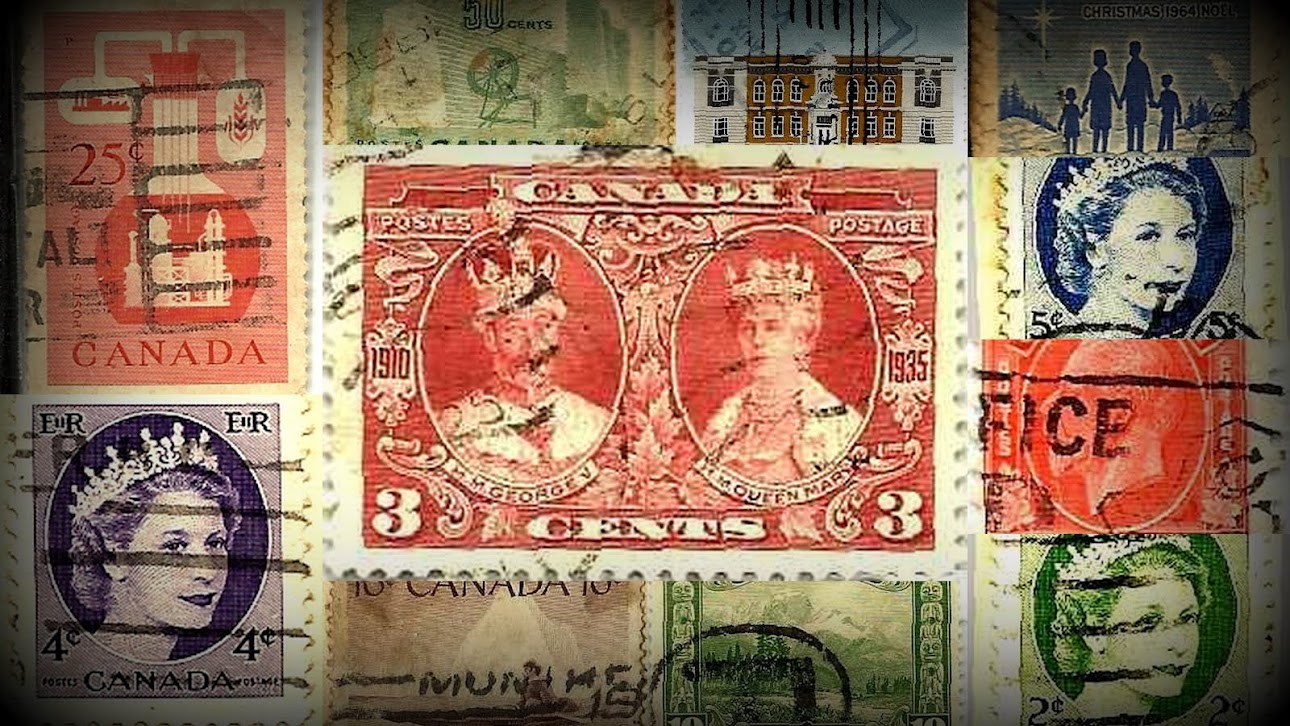 |
| Queen Elizabeth II Canada 34¢ Blue 1985 |
1985 Queen Elizabeth II 34¢ Blue Canada
Text: 34¢ Canada Post
Condition: Ø = used/cancelled
Title: Queen
Elizabeth II
Face value: 34
Stamp Currency: cent
Country/area: Canada
Year: 1985-07-12
Set: 1985 Queen Elizabeth II
Stamp number in set: 1
Basic colour: Blue
Exact colour:
Usage:
Definitive
Type: Stamp
Theme: Queen,
Head of States
Stamp subject: Queen Elizabeth II
NVPH number:
Michel number: CA 967
Yvert number: 914
Scott number: 926
Stanley Gibbons number: 1161
Printing office:
Perforation: 13 x 13½
Size: 20
x 24 mm
Watermark:
Paper:
Printing:
Buy Now: Bid Now:
Queen Elizabeth II Canada 1985
Title and style of the Canadian monarch
The title and style of the Canadian
sovereign is the formal mode of address of the monarch of Canada. The form is
based on those that were inherited from the United Kingdom and France, used in
the colonies to refer to the reigning monarch in Europe. As the possession of
various Canadian territories changed ownership and then the country gained
gradual independence, the style and title of the monarchs changed almost as
often at the kings and queens themselves. The mode of address currently
employed is a combination of a style that originates in the early 17th century
and a title established by Canadian law in 1953.
Title of the monarch
Further information: List of titles and
honours of Queen Elizabeth II
The monarch's title is set out by the
Royal Style and Titles Act, passed by the Canadian parliament in 1953, a year
following the accession of Princess Elizabeth, Duchess of Edinburgh, to the
throne as Queen Elizabeth II, and granted Royal Assent the day before her
coronation. It was later amended in 1985, and sets out the sovereign's title
as, in English:
“Elizabeth the Second, by the Grace of
God of the United Kingdom, Canada and Her other Realms and Territories Queen,
Head of the Commonwealth, Defender of the Faith.”
And in French:
“Elizabeth Deux, par la grâce de Dieu
Reine du Royaume-Uni, du Canada et de ses autres royaumes et territoires, Chef
du Commonwealth, Défenseur de la Foi.”
The title was composed to distinctly
mention Canada so as to highlight the monarch's shared status, being both Queen
of Canada and, separately, Queen of the United Kingdom, as well as of then six
other Commonwealth realms (today 14); with emphasis showing the distinct title
Queen of Canada as embedded in the longer formal title: Elizabeth the Second,
by the Grace of God of the United Kingdom, Canada and Her other Realms and
Territories Queen, Head of the Commonwealth, Defender of the Faith. When
composed in 1953, this format was consistent with the monarch's titles in all
her other realms; after 40 years of Elizabeth's reign, however, only Canada and
Grenada retained this title, all others, aside from the UK, having dropped the
reference to the United Kingdom. The sovereign will allude to herself as Queen of
Canada when in or acting abroad on behalf of that country. For example,
Elizabeth II said in 1973: "...it is as Queen of Canada that I am here,
Queen of Canada and of all Canadians, not just of one or two ancestral
strains." Since the title was adopted, the federal government has promoted
its use as a signifier of Canada's sovereign and independent status; Prime
Minister John Diefenbaker said of the title in 1957: "The Queen of Canada
is a term which we like to use because it utterly represents her role on this
occasion." The title is also included in the Oath of Allegiance, which
forms a part of the Oath of Citizenship, and can be found as ELIZABETH II DEI
GRATIA REGINA CANADA— Latin for Elizabeth II, by the Grace of God, Queen of
Canada— on the obverse of various medals in the Canadian honours system..

